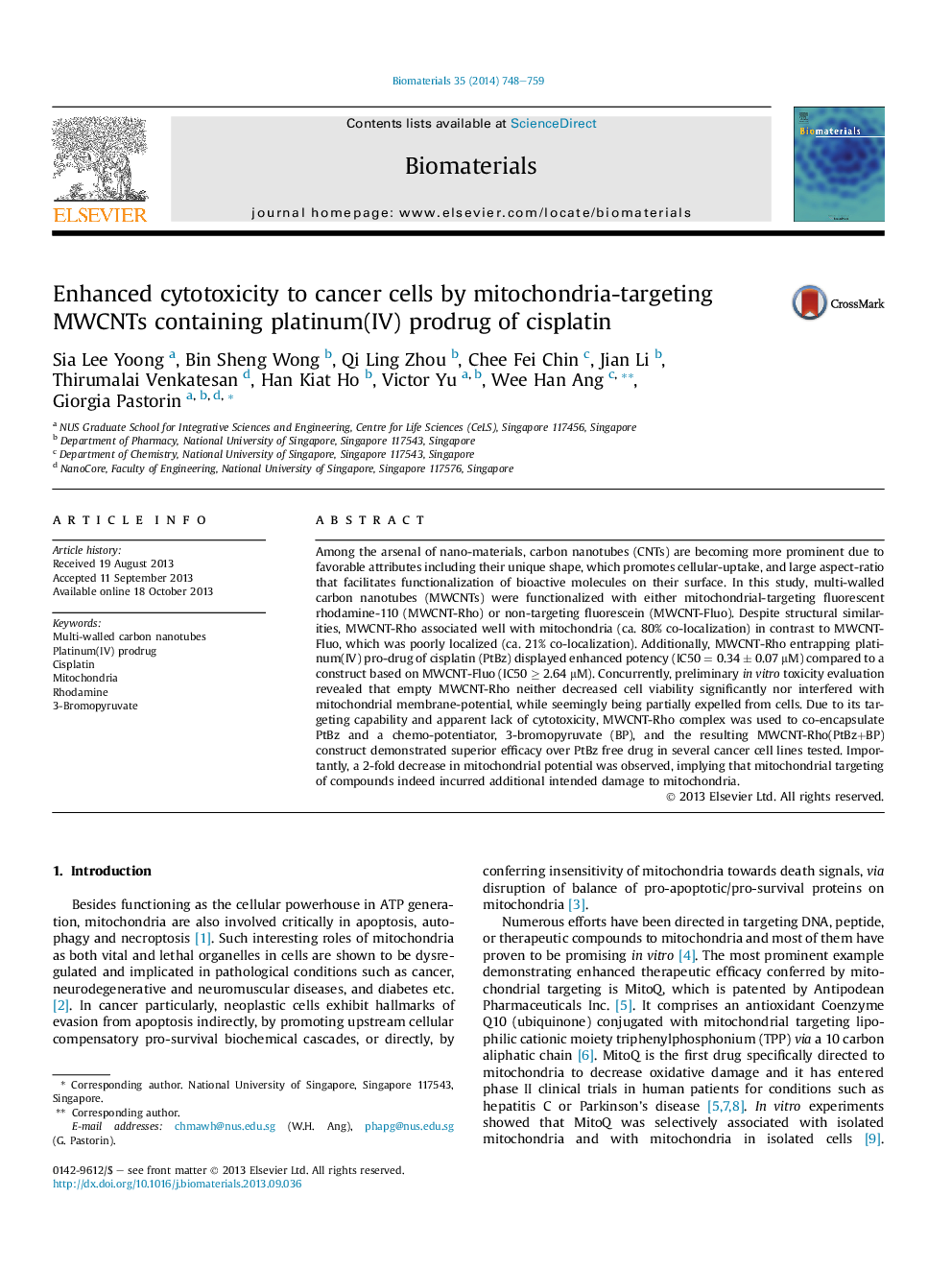| Article ID | Journal | Published Year | Pages | File Type |
|---|---|---|---|---|
| 10227785 | Biomaterials | 2014 | 12 Pages |
Abstract
Among the arsenal of nano-materials, carbon nanotubes (CNTs) are becoming more prominent due to favorable attributes including their unique shape, which promotes cellular-uptake, and large aspect-ratio that facilitates functionalization of bioactive molecules on their surface. In this study, multi-walled carbon nanotubes (MWCNTs) were functionalized with either mitochondrial-targeting fluorescent rhodamine-110 (MWCNT-Rho) or non-targeting fluorescein (MWCNT-Fluo). Despite structural similarities, MWCNT-Rho associated well with mitochondria (ca. 80% co-localization) in contrast to MWCNT-Fluo, which was poorly localized (ca. 21% co-localization). Additionally, MWCNT-Rho entrapping platinum(IV) pro-drug of cisplatin (PtBz) displayed enhanced potency (IC50 = 0.34 ± 0.07 μM) compared to a construct based on MWCNT-Fluo (IC50 â¥Â 2.64 μM). Concurrently, preliminary in vitro toxicity evaluation revealed that empty MWCNT-Rho neither decreased cell viability significantly nor interfered with mitochondrial membrane-potential, while seemingly being partially expelled from cells. Due to its targeting capability and apparent lack of cytotoxicity, MWCNT-Rho complex was used to co-encapsulate PtBz and a chemo-potentiator, 3-bromopyruvate (BP), and the resulting MWCNT-Rho(PtBz+BP) construct demonstrated superior efficacy over PtBz free drug in several cancer cell lines tested. Importantly, a 2-fold decrease in mitochondrial potential was observed, implying that mitochondrial targeting of compounds indeed incurred additional intended damage to mitochondria.
Related Topics
Physical Sciences and Engineering
Chemical Engineering
Bioengineering
Authors
Sia Lee Yoong, Bin Sheng Wong, Qi Ling Zhou, Chee Fei Chin, Jian Li, Thirumalai Venkatesan, Han Kiat Ho, Victor Yu, Wee Han Ang, Giorgia Pastorin,
